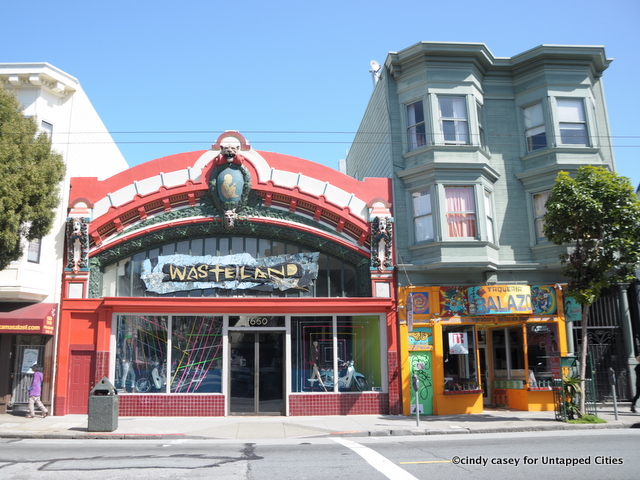Long before The Haight was known for Jimi Hendrix, White Rabbit and the Summer of Love, it was the go-to place for family fun-offering amusement park rides, a zoo, and a vaudeville house.
Prior to the completion of the Haight Street Cable Car line in 1883, The Haight was an isolated area of sand dunes and four nine-acre dairy farms. These dairy farms were owned by Harry Haight, R. Beverly Cole, and the Stanyan and Grattan families.
With the cable car came streetlights, gas, sewer and water lines and finally urbanization. The initial development consisted primarily of saloons, hotels and restaurants, but as real estate moguls realized that the cable car could transport working-class commuters to the downtown area, they swept in and built housing.
This western end of Haight was the primary entrance to Golden Gate Park–already a destination for weekend entertainment–so when Captain Paul Boyton of Coney Island franchised his Chutes Amusement to San Francisco, it was a natural place to build it. Located on Haight Street between Clayton and Cole, The Chutes opened on November 2nd, 1895.
When The Chutes first opened, it consisted solely of the Shoot the Chutes ride. The Chutes was an inclined trestle track that was 300-feet long and rose 70 feet above the ground. There were two-car tracks that took passengers to a room at the top of the slides where they would get on boats for a return ride down to an artificial lake. Entry was one dime for adults and a nickel for children.
The Scenic Railway ride came next. It was a roller coaster with dips and climbs that circled the perimeter of the grounds, nearly a mile in length. It consisted of an upper and lower track, but only one train was on the track at a time (each train was made up of cars that could carry six passengers each). The Scenic Railway terminated in an 800-foot tunnel that featured a lighted diorama depicting foreign lands.
Two more rides were installed in the amusement park: the Galloping Horses Merry Go Round, brought from England; and the Bewildering London Door Maze, a maze consisting of doors-some fixed, some moving-that took some time to work through.
An ad that ran in the November 5, 1895, San Francisco Call read:
Good Morning
Have You Shot the Chute
On
Haight Street
One Block East of the Park?
Open from 1 to 10 p.m.
Admission Ten Cents
Concert Afternoon and Evening
If You Have Not
Shot the Chutes
You Don’t Know What Life Is
In 1896 a zoo was added. The zoo’s headliner attraction was Wallace the Lion. Wallace was hyped as the fiercest lion in America; it was reported that he was untamable. The zoo included a South American jaguar, kangaroos, wallabies, leopards and bears, as well as, a hyena that refused to laugh. There were various species of monkey all housed in the Darwinian Temple, and many of them were available to touch and feed.
On June 27, 1897, the Chutes Theater opened. It claimed to be the largest vaudeville house west of Chicago, seating 3500 people and measuring 100 x 300 feet.
The Chutes were moved to Fulton and 10th Avenue in 1902, and then to Fillmore in 1909. Their final move was to Playland in the 1920s, where they were enjoyed until they were torn down in 1950.
After the Chutes on Haight were dismantled, the artificial lake was drained, and Belvedere Street was extended past Waller and Haight. Subsequently, more stores and residences sprang up in its place.
The residences of the Haight are primarily Victorians. At the time, Victorian-style architecture was marketed toward a conservative middle-class; hundreds of these residences survive today. The 1900 census shows that the Haight was a solid middle-class neighborhood consisting of married couples with children.
Today the largest age group residing in the Haight is 25-to-34 year olds with approximately 75% of the residents being listed as “non-family.” Despite suffering considerably in the 1970s from urban blight, The Haight has once again become a go-to place for fun with its unique restaurants and quirky shops.
Follow Untapped Cities on Twitter and Facebook. Get in touch with the author @PQPP3.









